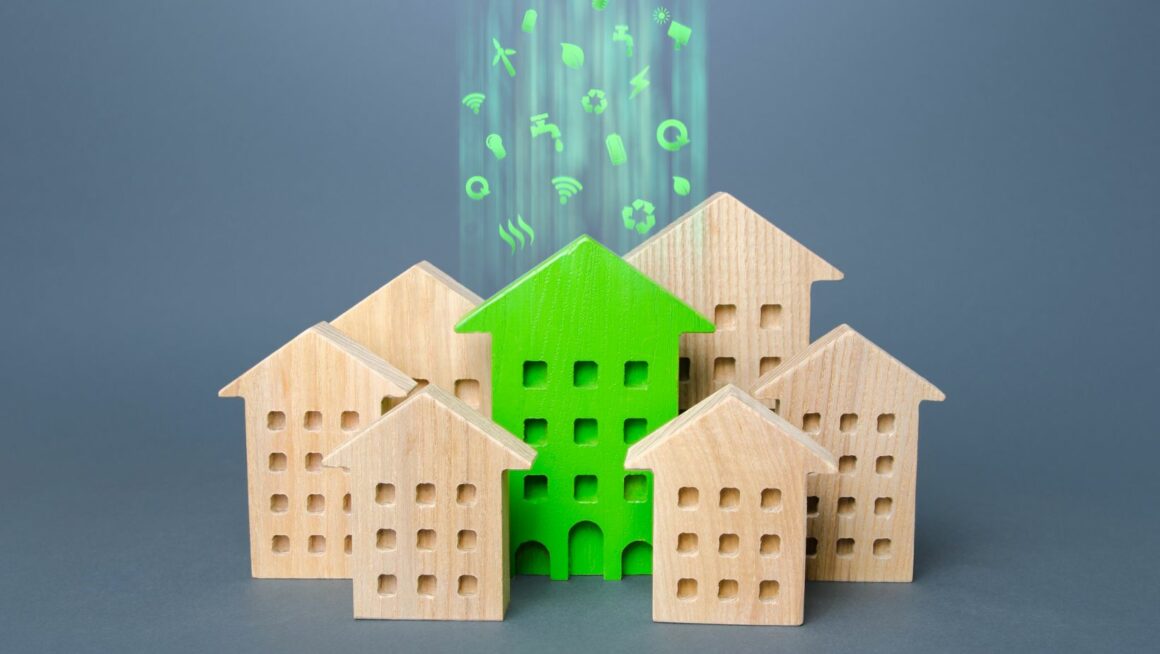As the world grapples with climate change and environmental degradation, green building technology emerges as a beacon of sustainability and innovation in the construction industry. This approach not only focuses on reducing the environmental impact of buildings but also enhances their efficiency and sustainability over time. By integrating advanced materials and smart technologies, green building practices promise a healthier future for our planet.
Green Building Technology
 Green Building Technology emphasizes sustainable practices in the construction industry, aiming to minimize environmental impact while enhancing efficiency and occupants’ health.
Green Building Technology emphasizes sustainable practices in the construction industry, aiming to minimize environmental impact while enhancing efficiency and occupants’ health.
The integration of specific components in green building technology plays a critical role in enhancing sustainable construction. Each component addresses different aspects of environmental sustainability, such as energy savings, water preservation, and the use of eco-friendly materials.
Energy Efficiency and Renewable Energy
Energy efficiency in green building technology involves using appliances and systems designed to minimize energy consumption. Examples include LED lighting, energy-efficient HVAC systems, and high-performance windows. Renewable energy sources, such as solar panels and wind turbines, are also integral, providing buildings with clean energy and reducing reliance on fossil fuels. Together, these technologies not only lower energy bills but also decrease the carbon footprint of buildings.
Water Management and Conservation
 Effective water management and conservation are achieved through innovative systems that reduce water waste. Systems like low-flow toilets and faucets, rainwater harvesting setups, and efficient irrigation systems are widely implemented in green buildings. These technologies help conserve water resources, which is particularly vital in areas facing water scarcity and drought conditions. They also contribute to reducing the overall environmental impact of the built environment.
Effective water management and conservation are achieved through innovative systems that reduce water waste. Systems like low-flow toilets and faucets, rainwater harvesting setups, and efficient irrigation systems are widely implemented in green buildings. These technologies help conserve water resources, which is particularly vital in areas facing water scarcity and drought conditions. They also contribute to reducing the overall environmental impact of the built environment.
Sustainable Building Materials
The selection of sustainable building materials is crucial for reducing the ecological impact of building construction and operations. Materials such as bamboo, recycled steel, and reclaimed wood are popular choices. These materials often require less energy to produce and are sourced from sustainable practices. Additionally, they contribute to the durability and energy efficiency of the buildings, supporting the overall goals of green building technology by lessening environmental degradation and promoting resource conservation.
Benefits of Green Building Technology
Reduces Environmental Impact and Enhances Energy Efficiency
 Green building technology significantly decreases the negative environmental impact of construction and operation. Buildings with energy-efficient systems, such as solar panels and smart thermostats, use less power, reducing reliance on non-renewable energy sources. Additionally, the incorporation of recycled materials, such as steel and wood, minimizes waste. Together, these practices contribute to lowering the overall carbon footprint.
Green building technology significantly decreases the negative environmental impact of construction and operation. Buildings with energy-efficient systems, such as solar panels and smart thermostats, use less power, reducing reliance on non-renewable energy sources. Additionally, the incorporation of recycled materials, such as steel and wood, minimizes waste. Together, these practices contribute to lowering the overall carbon footprint.
Buildings utilizing green technology are notably more efficient in their energy use. Advanced, energy-efficient appliances and systems like high-performance insulation and windows optimize energy consumption and reduce costs. This efficiency is crucial in mitigating global warming by significantly decreasing greenhouse gas emissions from buildings.
Improves Water Conservation
Implementing green building technologies plays a vital role in preserving water resources. Features such as low-flow fixtures and drought-tolerant landscapes effectively cut water usage. Rainwater harvesting systems provide an additional source of water, reducing dependence on local supplies and ensuring sustainability in water-scarce environments.
Supports Sustainable Urban Development & Promotes Healthier Living Environments
 Green building technology is central to sustainable urban development. It encourages the construction of buildings designed with an eye toward the future, considering their long-term impact on urban landscapes and ecosystems. This approach not only helps in reducing the urban heat island effect but also fosters communities that are resilient and prepared for future environmental challenges.
Green building technology is central to sustainable urban development. It encourages the construction of buildings designed with an eye toward the future, considering their long-term impact on urban landscapes and ecosystems. This approach not only helps in reducing the urban heat island effect but also fosters communities that are resilient and prepared for future environmental challenges.
Green buildings also enhance indoor environmental quality (IEQ), promoting healthier spaces for inhabitants. The use of non-toxic, low-VOC materials improves air quality, while natural light and effective ventilation contribute to better overall health and productivity. These environments are particularly beneficial in reducing occurrences of respiratory diseases and skin irritations.
Increases Property Value
Properties equipped with green technology typically enjoy a higher market value. Interest in sustainable living continues to grow, with more homebuyers and renters seeking out eco-friendly options. This demand leads to higher resale values, making green buildings a wise investment financially.

